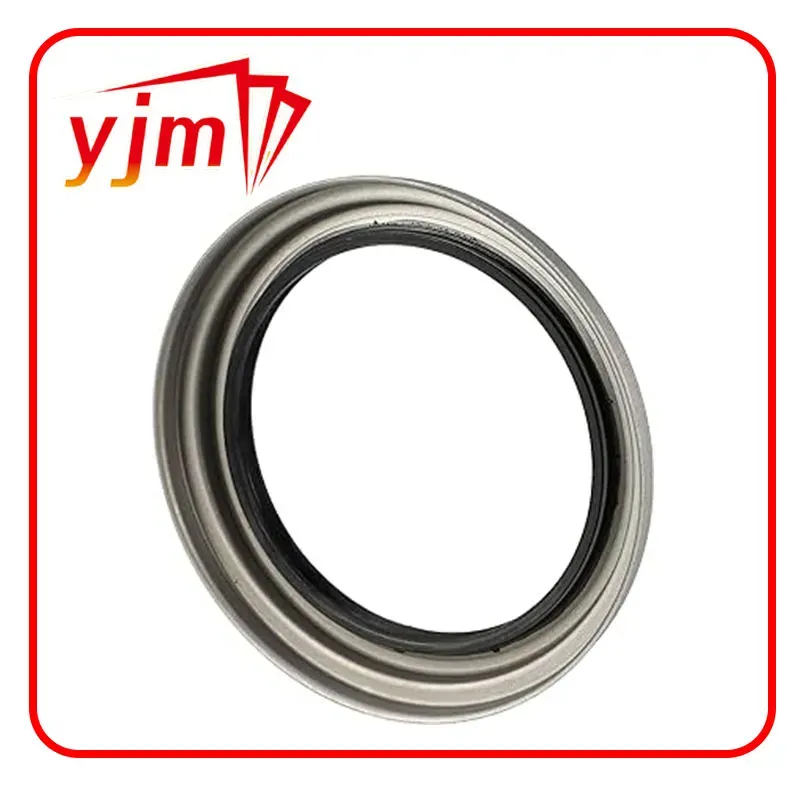Understanding the Function and Importance of Rotary Shaft Lip Seals in Machinery
Understanding Rotary Shaft Lip Seals Design, Function, and Applications
Rotary shaft lip seals are critical components in mechanical systems, playing an essential role in preventing the leakage of lubricants and contaminants. These seals are commonly used in various applications, including automotive, aerospace, industrial machinery, and more. This article explores the design, function, and benefits of rotary shaft lip seals, providing an overview of their significance in modern engineering.
Design and Components
Rotary shaft lip seals are comprised of several key components that work together to ensure a tight seal around a rotating shaft. The primary elements of a typical lip seal include
1. Seal Body Made from materials such as rubber, elastomer, or thermoplastic, the seal body provides structural support and flexibility.
2. Lip This is the sealing element that contacts the shaft. The design of the lip is critical for determining the effectiveness and efficiency of the seal. It typically features a circular edge designed to conform closely to the shaft surface.
3. Spring A metal spring may be included to enhance the contact pressure of the lip against the shaft. This ensures that the seal remains effective even under varying operating conditions.
4. Dust Shield In many designs, a dust shield is incorporated to prevent contaminants from entering the sealed environment, further extending the lifespan of the seal.
The selection of materials is crucial in the design of rotary shaft lip seals. They must be able to withstand high temperatures, chemical exposure, and mechanical wear, depending on the specific application. Common materials include Nitrile (Buna-N), Viton, and silicone, each offering unique properties suitable for different environments.
Functionality
The primary function of rotary shaft lip seals is to prevent the leakage of fluids (such as lubricants) from a rotating shaft while simultaneously keeping out dirt and water. This dual function is vital for maintaining the integrity of machinery and ensuring smooth operation.
When the shaft rotates, the lip of the seal creates a localized pressure that seals against the shaft surface. This pressure is maintained by the inherent elasticity of the seal material and the spring mechanism. As the shaft turns, any excess lubricant is contained within, while external contaminants are kept at bay.
rotary shaft lip seal

Proper installation of rotary shaft lip seals is also critical. The sealing surface must be smooth, and the installation must be performed with precision to avoid damage to the seal. Correct alignment and fit are essential to ensuring an effective barrier against leaks.
Applications
Rotary shaft lip seals are versatile and widely used across various sectors. In automotive applications, they are essential for sealing engines, transmissions, and differential assemblies, where they prevent oil leaks and protect against dust and dirt. In aerospace, these seals are used in engines, landing gear, and various hydraulic systems, ensuring performance and reliability under extreme conditions.
Industrial machinery also heavily relies on rotary shaft lip seals. They are found in pumps, conveyors, and electric motors, facilitating efficient operation by minimizing lubricant loss and preventing contaminants from entering critical components.
Benefits
The advantages of using rotary shaft lip seals in mechanical systems are numerous
1. Leak Prevention They effectively minimize fluid leakage, which is vital for operational efficiency and maintenance cost reduction.
2. Durability Designed to withstand harsh environmental conditions, rotary shaft lip seals have a long lifespan when properly maintained.
3. Customization These seals can be tailored to fit specific applications, with various shapes, sizes, and materials available to meet diverse needs.
4. Reduced Maintenance By preventing leaks and protecting components from contaminants, rotary shaft lip seals can significantly decrease the frequency and cost of maintenance interventions.
Conclusion
In conclusion, rotary shaft lip seals are indispensable components in an array of mechanical systems, ensuring reliable operation by preventing leaks and protecting against contaminants. Their innovative design, coupled with their versatile applications, highlights their importance in engineering. As technology advances, the continual improvement of seal materials and designs will further enhance their performance and longevity, solidifying their role in modern machinery and automotive applications. Understanding rotary shaft lip seals and their function can lead to better design choices, ultimately contributing to the efficiency and reliability of mechanical systems.
-
Simplifying Oil Changes: A Comprehensive Guide to Oil Drain Plugs and Their Variants
News Aug.04,2025
-
Mastering Oil Drain Maintenance: Solutions for Stripped, Worn, and Upgraded Oil Plugs
News Aug.04,2025
-
Fixing Oil Pan Plug Issues: Leaks, Stripped Nuts, and the Right Replacement Solutions
News Aug.04,2025
-
Everything You Need to Know About Oil Drain Plugs: Sizes, Fixes, and Upgrades
News Aug.04,2025
-
Choosing the Right Oil Drain Plug: A Guide to Sizes, Materials, and Drain Innovations
News Aug.04,2025
-
A Complete Guide to Automotive Drain Plugs: Types, Problems, and Innovative Solutions
News Aug.04,2025
-
The Ultimate Guide to Car Repair Kits: Tools and Essentials Every Driver Should Own
News Aug.01,2025
Products categories















